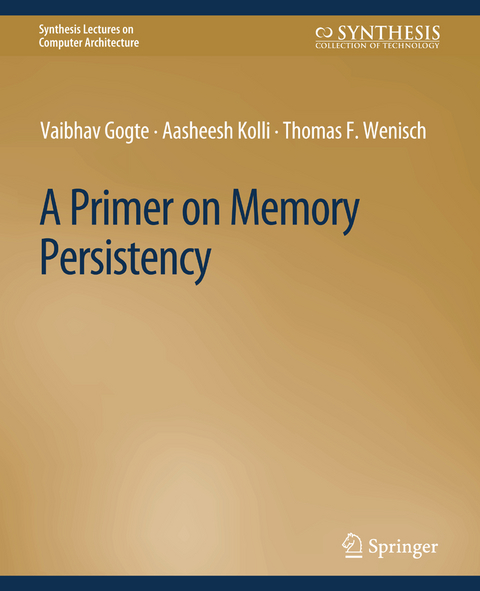
A Primer on Memory Persistency
Springer International Publishing (Verlag)
978-3-031-79193-2 (ISBN)
Vaibhav Gogte is a Software Engineer at Google. He received his Ph.D. in Computer Science and Engineering fromThe University of Michigan, Ann Arbor in 2020. He received his Master's in Computer Science and Engineering from The University of Michigan in 2016 and graduated with a Bachelor's in Electrical and Electronics Engineering from Birla Institute of Technology and Science, Pilani, India in 2011. His research interests are in computer architecture, with a particular focus on architecture, compiler, and systems support for integrating byte-addressable non-volatile memories in future computing systems. His research has been published at several venues, including ISCA, MICRO, ASPLOS, PLDI, and FAST. Aasheesh Kolli is a Software Engineer at Google. His interests are in computer systems architecture; his work includes processor architectures, memory subsystems, programming interfaces, and systems software. His recent research focuses on designing next-generation memory systems, particularly on persistent memory and disaggregated memory systems. Aasheesh received his Ph.D. (2017) and MS (2013) from the University of Michigan, and his BE (2011) from Birla Institute of Technology and Science, Pilani, India. His work has resulted in multiple research papers, including best paper award, at venues like SOSP, ISCA, ASPLOS, and MICRO. He was awarded the 2018 ACM SIGARCH/IEEE CS TCCA Outstanding Dissertation Award. Thomas F. Wenisch is Director of Engineering at Google and an Adjunct Research Scientist (formerly Professor of Computer Science and Engineering) at the University of Michigan, specializing in computer architecture. Wenisch received the NSF CAREER award in 2009, the 2012 University of Michigan Henry Russell Award, a University-wide award for extraordinary accomplishment in scholarship and teaching for early-career faculty, and the Michigan CSE Outstanding Achievement Award for accomplishments in scholarly research, classroom teaching, student mentoring, and leadership in service in 2016. In 2021, Wenisch was awarded the ACM SIGARCH Maurice Wilkes Award, the most prestigious mid-career award in computer architecture, for contributions to memory persistency and energy-efficient systems. He received his Ph.D. in Electrical and Computer Engineering from Carnegie Mellon University
Preface.- Acknowledgments.- Persistent Memories.- Data Persistence.- Memory Persistency Models.- Hardware Mechanisms for Atomic Durability.- Programming Persistent Memory Systems.- Conclusion.- Bibliography.- Authors' Biographies.
| Erscheinungsdatum | 09.06.2022 |
|---|---|
| Reihe/Serie | Synthesis Lectures on Computer Architecture |
| Zusatzinfo | XIX, 95 p. |
| Verlagsort | Cham |
| Sprache | englisch |
| Maße | 191 x 235 mm |
| Gewicht | 233 g |
| Themenwelt | Mathematik / Informatik ► Informatik ► Theorie / Studium |
| Technik ► Elektrotechnik / Energietechnik | |
| ISBN-10 | 3-031-79193-2 / 3031791932 |
| ISBN-13 | 978-3-031-79193-2 / 9783031791932 |
| Zustand | Neuware |
| Haben Sie eine Frage zum Produkt? |
aus dem Bereich


